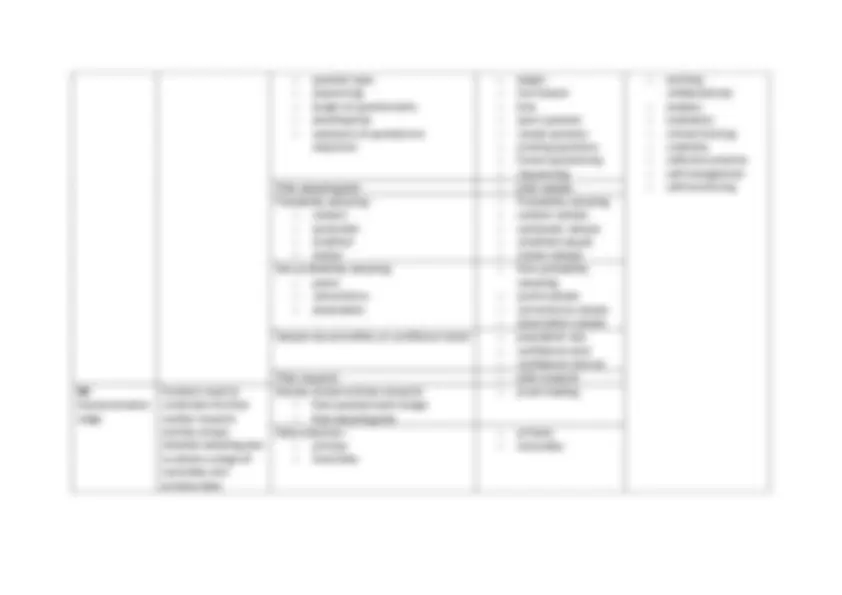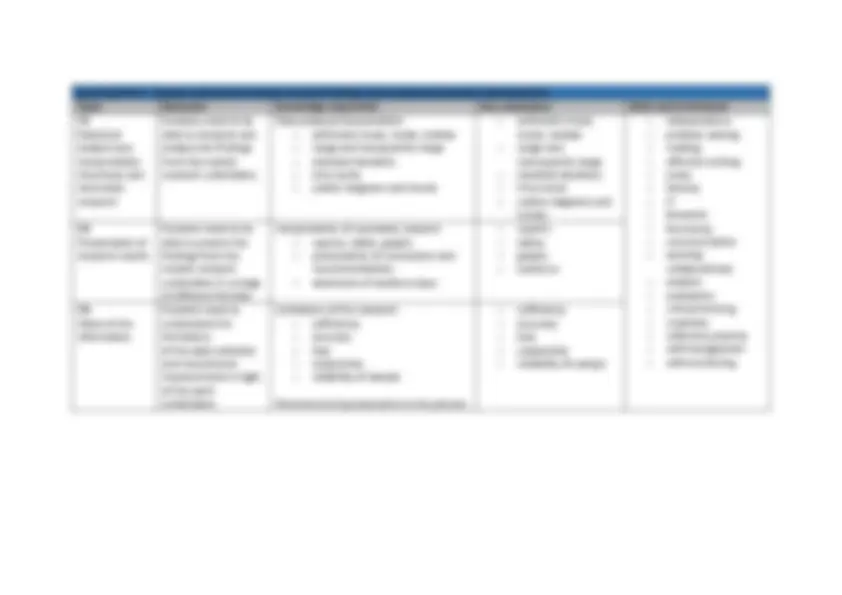




Study with the several resources on Docsity

Earn points by helping other students or get them with a premium plan


Prepare for your exams
Study with the several resources on Docsity

Earn points to download
Earn points by helping other students or get them with a premium plan
Community
Ask the community for help and clear up your study doubts
Discover the best universities in your country according to Docsity users
Free resources
Download our free guides on studying techniques, anxiety management strategies, and thesis advice from Docsity tutors
Learning Aim A - Examine the types of market research used in business. Topic. Rationale. Knowledge acquisition. Key vocabulary. Skills and enrichment. A1.
Typology: Summaries
1 / 4

This page cannot be seen from the preview
Don't miss anything!



Year 13 Topics – BTEC National Business In year 13
we teach the following topics over the course of the year. Each topic develops and deepens the Core knowledge that will underpin all areas of
-^ Examine the types of market research used in business
Topic
Rationale
Knowledge acquisition
Key vocabulary
Skills and enrichment
A1 Purpose ofmarketResearch
Students need to understand thepurpose of marketresearch.
-^ understand
customer behaviour
-^ determine buying trends -^ investigate brand/advertisingawareness -^ aid new product development -^ investigate feasibility of entry intonew markets -^ to meet marketing objectives -^ baby boomers -^ millennials -^ objectives -^ buying trends -^ customer behaviour -^ brand awareness -^ marketing -^ advertising -^ budgets -^ campaigns -^ feasibility study -^ research -^ independence -^ problem solving -^ reading -^ effective writing -^ oracy -^ literacy -^
-^ Research -^ Numeracy -^ communication -^ workingcollaboratively -^ analysis
A2 Types ofresearch
Students need to understand thedifferent types ofmarket research.
Qualitative and quantitative
-^ respondent -^ quantitative -^ qualitative -^ primary -^ secondary -^ survey -^ e-marketing -^ observation -^ focus group -^ pilot research -^ internal resources -^ external resources
Secondary research internal sources:
-^ loyalty schemes -^ epos records -^ website monitoring -^ accounting records -^ specialist market research agencies External sources: -^ internet -^ government statistics -^ competitor reports
-^ specialist market intelligence agencies, e.g. Mintel, Ipso, Mori -^ loyalty
scheme
-^
-^
-^ demographics
Primary research:
-^ surveys -^ observation -^ e-marketing -^ focus groups -^ pilot research
A3 Appropriatenessof choiceof research
Students need to understand howdifferent marketresearch methods areappropriate in helpingto meet marketingobjectives and informdecision making.
Appropriateness:
-^ cost -^ accuracy -^ timelines -^ response rates -^ validity -^ verification -^ ambiguity -^ anonymity -^ timeline -^ schedule -^ response rate -^ publicity -^ target population -^ incentive -^ distribution
Learning Aim
B^ -^ Plan and implement a market research activity to meet a specific marketing objective
Topic
Rationale
Knowledge acquisition
Key vocabulary
Skills and enrichment
B1 Planning stage
Students need to undertake secondaryresearch for a selectedmarketing objective,carry out pilot primarymarket research andcollect sample data.
Market research plan:
-^ problem definition -^ set research objectives -^ budget -^ determine what data is to becollected -^
-^ objectives - -^ independence -^ problem solving -^ reading -^ effective writing -^ oracy -^ literacy -^
-^ Research -^ Numeracy -^ communication
Methods to be used:
-^ secondary and primary -^ quantitative and/or qualitative -^ secondary -^ primary -^ quantitative -^ qualitative
Pilot questionnaire design:
-^ ambiguous
Learning Aim
C^ -^ Analyse and present market research findings and recommend process
improvements.
Topic
Rationale
Knowledge acquisition
Key vocabulary
Skills and enrichment
C1 Statisticalanalysis andinterpretationof primary andsecondaryresearch
Students need to be able to interpret andanalyse the findingsfrom the marketresearch undertaken.
Data analysis/interpretation:
-^ arithmetic mean, mode, median -^ range and interquartile range -^ standard deviation -^ time series -^ scatter diagrams and trends -^ arithmetic
mean, mode, median
-^ range andinterquartile range -^ standard deviation -^ time series -^ scatter diagrams andtrends -^ independence -^ problem solving -^ reading -^ effective writing -^ oracy -^ literacy -^
-^ Research -^ Numeracy -^ communication -^ workingcollaboratively -^ analysis -^ evaluation -^ critical thinking -^ creativity -^ reflective practice -^ self-management -^ self-monitoring
C2 Presentation ofresearch results
Students need to be able to present thefindings from themarket researchundertaken in a rangeof different formats.
Inter
pretation of secondary research • reports, tables, graphs • presentation of conclusions andrecommendations • awareness of audience type
-^ reports -^ tables -^ graphs -^ audience
C3 Value of theinformation
Students need to understand thelimitationsof the data collectedand recommendimprovements in lightof the workundertaken.
Limitations of the research:
-^ sufficiency -^ accuracy -^ bias -^ subjectivity -^ reliability of sample Recommend improvements to the process -^ sufficiency -^ accuracy -^ bias -^ subjectivity -^ reliability of sample